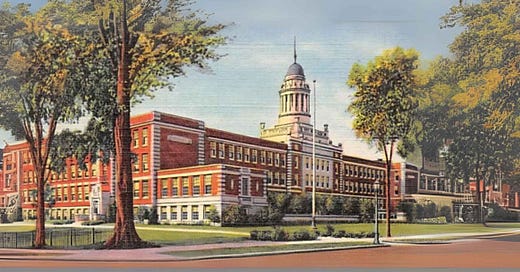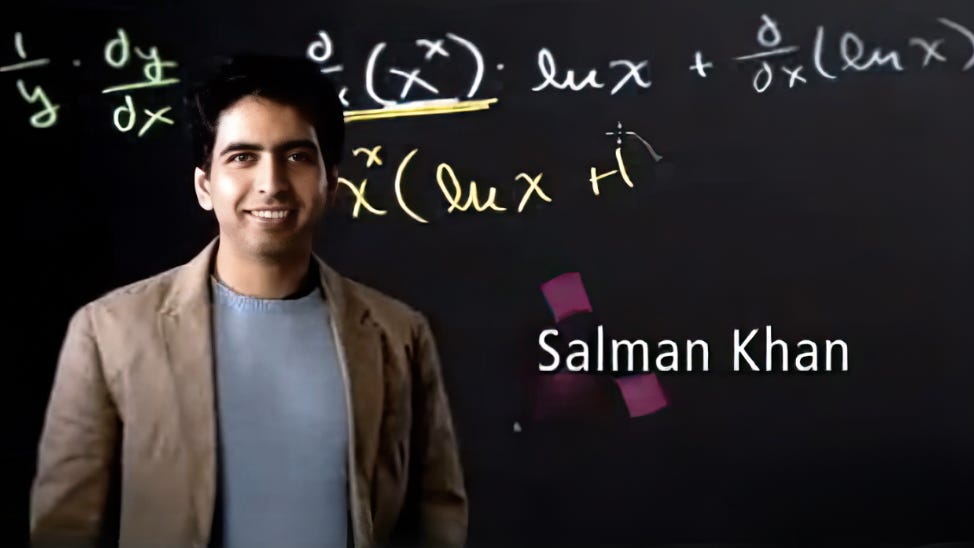American education, as presently structured, no longer serves the intellectual or civic needs of its citizens. This is not a partisan judgment but a structural one. Public schools, frozen in the industrial model of the early 20th century, insist on uniform pacing, rigid age-based cohorts, and lockstep curricula. The result is predictable: gifted students are bored, struggling students fall further behind, and nearly everyone is disengaged. The system does not educate, it processes. Its aim, increasingly, is credentialism, not comprehension.
What is needed is not reform but reinvention. Schools must be built anew, grounded in what cognitive science has long suggested and what new technologies now make possible: mastery learning, individualized pacing, and continuous feedback. These are not utopian ideals. They are the backbone of Khan Academy, and with the addition of artificial intelligence, they can finally be realized at scale.
This need for reinvention is not abstract to me. I attended Pittsfield High School in the Berkshires of Massachusetts, a grand structure completed in 1931 and designed explicitly to resemble the factory floors of nearby textile and manufacturing plants. The architects modeled its large windows, tall ceilings, and stark interiors on the industrial spaces of Arnold Print Works in North Adams and Holyoke Textile Mills in Holyoke. The purpose was straightforward: to make students comfortable with the physical environment of factory labor, which most of them would eventually enter. By the 1980s, when I walked those halls, the factories were long gone, their hum replaced by silence. Yet the school remained fixed in its original design and mission, educating students for jobs that no longer existed. It still does today. That experience impressed upon me the deep inertia of educational institutions and the urgency of structural change. If the architecture can remain so blindly committed to the past, so too can the pedagogy within.
Let us begin with mastery. The idea, championed by educational psychologist Benjamin Bloom in the 1980s, is simple: students should not advance until they have demonstrated genuine understanding. In Bloom's studies, students taught under mastery conditions, often with one-on-one tutoring, performed two standard deviations better than those in conventional classrooms. This is the so-called "two sigma problem." The problem, of course, was implementation. Few schools could afford private tutors for every student. The solution was always technological. Only now, with tools like Khan Academy and its AI-powered tutor Khanmigo, has the necessary technology arrived.
Khan Academy, founded by Sal Khan, embodies mastery learning in digital form. Students proceed at their own pace through bite-sized lessons, each one mastered before the next is attempted. Skills build upon one another. The platform provides immediate feedback, detailed diagnostics, and rich visualizations of student progress. It respects the intellect of each learner by refusing to move forward until understanding is solidified.
This is not theory. Rigorous studies confirm its efficacy. In a randomized control trial covering over 11,000 students across the United States, students using Khan Academy with a mastery focus outperformed their peers by 0.12 to 0.22 standard deviations in math. In Brazil, a similar intervention across 157 primary schools found substantial gains not only in math scores but also in students' attitudes toward learning. In short, Khan Academy works. And it works particularly well for those historically underserved by traditional education.
This brings us to the role of artificial intelligence. AI has, quite rightly, raised concerns. But the question is not whether AI should be in the classroom. It is already there. The question is whether it will be used wisely, to support teachers and students, or foolishly, as a gimmick or crutch. Khan Academy has chosen the wiser path. Khanmigo, their AI tutor built on GPT-4 architecture, does not spoon-feed answers. It scaffolds. It probes. It questions. When a student is stuck on a problem, Khanmigo guides them to insight without robbing them of discovery. When a student missteps, it offers feedback tailored to the error. In many respects, it behaves like an ideal tutor: patient, attentive, Socratic.
Early results are promising. In pilot programs across US schools, students using Khanmigo showed significant improvements in both engagement and test scores. Preliminary data suggests as much as a 20% performance increase in targeted subjects compared to students without AI assistance. More importantly, students reported enjoying learning again. They were not being talked at. They were in conversation. And conversation, as Socrates might remind us, is the soul of education.
Teachers benefit too. Khanmigo reduces the administrative burden, generating lesson plans, quizzes, differentiated practice problems, freeing teachers to focus on the human work that no AI can replicate: motivation, mentorship, moral guidance. AI does not replace teachers; it liberates them from bureaucracy.
The conservative case for this transformation is obvious. It respects the autonomy of the learner. It honors excellence by allowing each student to progress as far and as fast as his or her aptitude allows. It removes the central-planning mentality from education and replaces it with individualized accountability. And, crucially, it does so without inflating costs or expanding bureaucracies. This is not a call for a new department of education initiative. It is a call to adopt tools already proven, already working, already free.
But advocacy is not enough. What we now need is a concrete, scalable demonstration project. It is time to launch a new kind of school, privately managed and publicly funded, using the very best of Khan Academy and artificial intelligence.
To that end, I propose the establishment of new private schools in each of Texas' five largest cities, Houston, Dallas, San Antonio, Austin, and Fort Worth. These institutions will be grounded in the principles of mastery-based learning, enhanced by AI-supported tutoring, and open exclusively to students utilizing Texas' new Education Savings Account (ESA) program, created by Senate Bill 2 and signed into law by Governor Greg Abbott on May 3, 2025. With $1 billion in funding, it stands as the most ambitious day-one school choice initiative in American history. It deserves not just a headline, but a flagship.
I willing to help build that flagship. Including helping to raise the necessary capital, recruit the teachers and staff, and do whatever it takes to help get these schools off the ground. I’m not looking for a title or a paycheck. What I’m looking for is a way to help, our kids, our state, our country, and perhaps, if we get this right, the world.
These new schools will not be modeled on elite prep academies or overbuilt charter schools. Instead, they will draw inspiration from the Alpha School network, a growing Texas-based system that delivers extraordinary outcomes through an unconventional formula: two hours of core learning per day, powered by adaptive technology, followed by an afternoon devoted to projects, entrepreneurship, public speaking, and leadership training. The goal is not to fill time. The goal is to form citizens. Alpha understands that students can learn academic material faster when it is delivered intelligently, and that what matters more than memorization is judgment, self-awareness, and confidence.
Imagine a school where every child begins the day with an hour of personalized math instruction using Khan Academy and Khanmigo, followed by an hour of reading and writing, again guided by AI, supported by human educators. Imagine that by 10:30 a.m., the academic minimums are complete. The rest of the day is spent not in worksheets and lectures, but in Socratic discussion, public speaking, problem solving, and physical activity. Instead of preparing students to pass a state test, we prepare them to run a meeting, defend a thesis, or launch a business.
By accepting only ESA-funded students, these schools would serve precisely the families who have lacked access to elite education: working-class Texans, minority students, those trapped in broken school districts. Their tuition would be fully covered by the state’s school choice program. No family would pay a dime. Yet the education offered would match or exceed that of schools costing $30,000 or more per year.
This rollout would serve as a model. If successful in Texas’ urban centers, the approach could be expanded statewide, and later nationwide. Conservatives have long believed in the power of markets and the necessity of educational freedom. Here is the chance to prove it, not by talking, but by building.
We have the tools. We have the funding. And in Texas, we now have the legal framework. What we need next is leadership, principled, entrepreneurial, and courageous enough to defy the educational establishment and put students first.
The stakes are high. If we do not act, we will condemn another generation to a system that has already failed them. But if we act now, intelligently, boldly, and with conviction, we can build an education system worthy of a free people.
If you enjoy my work, please consider subscribing https://x.com/amuse.







Thanks for presenting modern methods to educate, was not aware. Thanks also for offering your help to Texas. Perhaps that laboratory of democracy can show others a better way. Hopefully it won’t be tainted by partisan politics, our kids are too important.